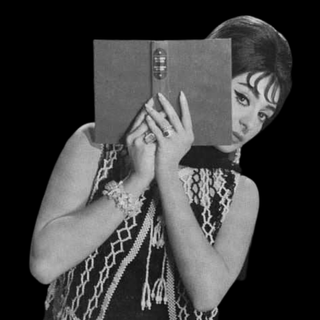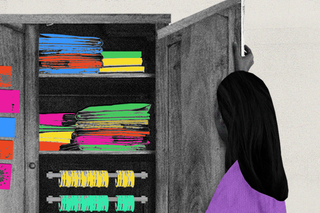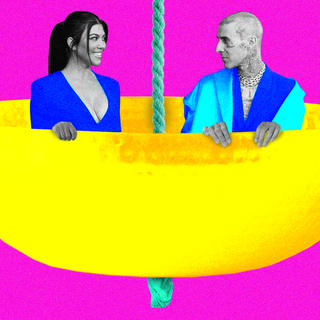
What Family Heirlooms Can Teach People About Their Histories
“Without objects, we often have trouble remembering…[these are] objects that help us keep the memories alive.”

Divisha Srivastava was all of eight when her grandmother gave her a round box. The silver box, engraved with a Bangali writing, stored trinkets and coins measured in annas and quarters. At 10, Divisha’s grandmother died. It was too late to find out what those engravings meant.
“After her death, I didn’t know who to ask,” she says. “So I kept the box with me for years. I used it to store trinkets, as advised.”
The outside of the box, now a moody gray, carried as much intrigue as its insides, if not more. Bangali was a language familiar but distant for Divisha. It was the language her father grew up with but simultaneously one she found alien. “I have always felt disconnected from the Bangali part of my identity.” For her, the box “serves as a reminder to me of a part of my identity I haven’t had the chance to discover and explore – because of life and circumstance.”
The box falls into an indescribable category of material inheritance. For some, this may come in the form of old saris and jewelry that now carry a patina of rust; for others, it could be tea sets, handkerchiefs embroidered with names of loved ones, or postcards from a distant era. Personal memory and emotions become inscribed into material objects, telling tales of family histories. “Through these objects,” Divisha says, “I get to have a sense of who they [ancestors] were, where they came from, and where they ended up.”
***
The “material” aspect of this brand of inheritance cements this relationship. The physicality of an unearthed letter or silverware – the touch, smell, texture, color, wear, erosion, rust, patina – any and every marker of time, is evocative. It becomes a wormhole to remembering a family anecdote, an event, or an individual.
Tereza Østbø Kuldova, a research professor at Oslo Metropolitan University, likens material objects to mnemonic devices; “a proxy for a memory, a person, a moment lived, a place visited.” In On the Road to Mandalay, Devyani Gupta writes about a simple handcrafted leather purse her grandmother bought in 1960 as a young woman in Burma, with a newly acquired medical degree. “My nani’s cupboards open up to photographs, trinkets, and objects, like this purse, from a far-flung place and a bygone time. . . But the stories that accompany them tie it all together in an unbroken thread to this place and this time.”
Tereza finds reason in this pursuit of remembering: “Without objects, we often have trouble remembering…objects help us keep the memories alive.”
Material objects also capture the pathos of trauma. Momentos lie in the homes of Holocaust survivors, just like letters and artifacts remain for Partition survivors. In Swati Moitra’s home, there is a radiant ruby necklace that came from their family wealth in Burma, before their expulsion during WWII. This was followed by another exodus, the Partition of India. The necklace has since been remodeled into smaller pieces of jewelry and handed down to subsequent generations as heirlooms.
Related on The Swaddle:
“It is very much a tangible memory of collective and intergenerational trauma of displacement and violence,” says Swati, a cultural studies scholar. “For a lot of refugee households, these were the only tangible memories of their past.” Aanchal Malhotra, who co-runs the Museum of Material Memory, alsoexplained the relationship between objects and memory. She said: “It’s very difficult to go to someone and say, ‘You lived through Partition—tell me all about it, I heard it was awful.’ But it’s a completely different thing to say ‘This dupatta came from across the border, can you put it on, can you tell me how you feel when you wear it? Who gave it to you? Who made it? Where did it come from? Why did you carry this? How did you hear of Partition?’ … through the object, you can enter a landscape that might otherwise be quite traumatic.”
In one of the entries on her blog, Ipsa Samaddar recalls brass utensils used exclusively for Durgo Pujo by her family one century ago. Connected with them is the story of Didimoni, her great-grandmother, who single-handedly transported the utensils from present-day Bangladesh to Kolkata in 1949. “Along the cross-border route, there was a checking point at Darshana station, where most belongings would be confiscated or thrown away from passengers. Somehow, Didimoni got her trunks past them,” she wrote. These utensils sit in a dusky trunk, reminding her of a woman who “… lives in my mother’s words, a brave woman I feel I’ve known all my life.” Then there is the story of the textile fabric weaved in Punjab. Called majnu khes, its knowledge was lost during Partition, since most of the weavers were Muslim, the craftspersons migrated to West Punjab (in Pakistan). For Arjunvir Singh, “[this textile] will always be his memory and the memory of a home I never saw… This Khes is my only connection to a home that could have been.”
The discovery of family objects is also the discovery of complexity. In the wider landscape of memory and history, tangible objects add to the archive of what we know of and understand about our families. Sheena, and her brother Samarth, have diligently collected every tangible history of their family. For Samarth, there is one particular photograph of their nani, clicked just days after her husband passed away, mere 10 years into their marriage. In it, she sits with an air of melancholy, one that was hard to reconcile with the cheer and joy she represented for Samarth. “My nani would have had to take care of three children, along with everything else, like property and all the family. She was depressed for around two years after his death.” He tries to picture her life: “One day she decided that this is enough; I have so many responsibilities and I need to take care of them. This exact moment [in the picture] is when she must have been sitting on her bed … and decided: ‘I have to get up on her feet right now.’” For people like Samarth, these heirlooms become a way to remain grounded to the truth.
According to Navdha, co-founder of the Museum of Material Memory,even the subtle acts of going through family albums or caressing a dupatta “encourages intergenerational conversation, verbal or non-verbal.”
For Rachel Chitra, 37, the act wasn’t exactly subtle; it involved unlearning and learning what she knew of her social identity at the age of 30 — by way of lost letters and photographs. Her great grandfather was a champion for Dalit rights, and “yet my people didn’t tell me he was Dalit, and by extension, I was Dalit,” she says. “They thought this was a matter of shame and hid it from me.” Now, Rachel is trying to learn about her caste identity, bridging the gap in her personal and social history. A sense of familiarity with her great-grandfather’s life moors Rachel to an undiscovered but critical history, giving her pride and resilience. It’s a reminder to not “let life take me down under, and to always fight back.”
Related on The Swaddle:
How Photographs Influence Our Memories
Samarth looks at his nani’s tea sets, a set of six dainty white cups with silver lines bordering them. Evening tea in the garden was his grandparents’ daily ritual carried out with biscuits and namkeen, memories of which were spoken about fondly in the family. Today, he is curious about how the culture of tea became a part of their lives, to begin with. The fine chinaware was the starting point for him to trace the culture around tea drinking – a result of colonial capitalism, urbanization, and solid marketing, thus making the British tea into Indian chai for them: “I saw my family in a new light. I could see my family at the intersections of caste, class, colonialism, and post-colonialism. I understood what it means to be modern, but at the same time, very conservative, as a family.”
***
The past is distilled through the prism of memory, shared memories and family stories are patched together, told, and retold to create a sense of belonging and identity.
“We often think of material objects as bearing traces of the people who once possessed them or wore them, their personality, attitude, beauty, character,” says Tereza, thus desiring to embody the other, at least partially, through the material. This is magical thinking, but real all the same. “When an object like a sari or a piece of jewelry is bequeathed from one generation to the next,” Navdha says, “it becomes a wearable history.”
The object carries not only the memories of the original owner but also those of the person who has inherited it. Navdha explains this accumulation as: “When was it made, when was it bought, what were popular materials at the time, has it traveled with its owner, was it purchased for on an occasion, was it bequeathed on an occasion?An object has the capacity to hold history, layer upon layer, generation upon generation, and eventually – as each generation creates new memories associated to, or while donning the objects – become a palimpsest for family stories.”
For example, Sheena’s grandmother had incredible taste and was a veritable diva by her estimation. When she wears a gorgeous pink silk saree, “it feels like I have a part of her and it’s not something I’m borrowing.”
***
Anthropologist Annette Weiner’s theory of “inalienable wealth” captures what these heirlooms mean: these are objects “imbued with intrinsic and ineffable identities of their owners.” Inalienable wealth is as much about kinship as it is about economics and power. Heirlooms are tokens of “wealth,” restricted to some “owners,” speaking to the way opportunity and resources are structured and divided across society. Who gets to inherit glimmering chalices, ruby necklaces, or even a sari, depends on social locations and non-marginalized identities. People don’t just inherit emotions, they inherit traditions and pride built on structural oppression.
Swati thinks of the ruby necklace that now sits in her sister-in-law’s wardrobes, the inequality polished within: “You would need to have some material wealth to inherit these things in the first place.” For those without any ancestral wealth, the question of material inheritance carries more trauma and pain than it does longing. Heirlooms, by virtue of their interconnectedness, privilege bloodlines.
Then this is a story of histories, how personal they can be, but oppressive at the same time. In Middlemarch and Daniel Deronda, George Eliot subverts this idea of material inheritance. The heirloom in question, associated with classed meanings and wealth, becomes a symbol not of timeless traditions, but of the person’s emotions and individuality. Dorothea Brooke, the female protagonist in Middlemarch, inherits green emeralds from her mother to embody social prestige. Through the emerald, Dorothea was supposed to look and feel in a socially acceptable way. But through the passage of the novel, the emeralds become a way for Dorothea to pursue erotic pleasure and sensual beauty, contradicting the gendered expectations the heirlooms were passed down with.
The piece of jewelry thus disrupted the traditional modes and meanings imbued in heirlooms. “They are important not as symbols of timeless family traditions but, rather, as emotional epicenters or psychic landmarks,” researcher Katherine Osborne wrote of this configuration. “… she transfers the heirloom’s locus of affiliation from the traditional to the emotional; rather than privileging bloodlines, as heirlooms are supposed to.”
In other words, heirlooms can become a way of inheriting emotions, not traditions. People can “disown” pride and prejudice both that come with inheriting material objects carrying gendered and classed meanings. These family archives then carry a hint of revolt and subversion; they can be informal, fluid, and more accepting of chaos – if only people allow it.
Divisha eventually did discover what the engravings on the box of trinkets meant. It read “Indrani,” the name of her father’s grandmother. The box belonged to a woman, an entity without social privileges, more than 100 years ago, who navigated the social hierarchies of the time. It belongs to Divisha now, who inherits a century-worth of emotions and stories.
Saumya Kalia is an Associate Editor at The Swaddle. Her journalism and writing explore issues of social justice, digital sub-cultures, media ecosystem, literature, and memory as they cut across socio-cultural periods. You can reach her at @Saumya_Kalia.
Related


The Buzz Cut: Couple Tries Ayurvedic Cleanse for Fertility, Achieves Final Form Within White Celeb Culture
